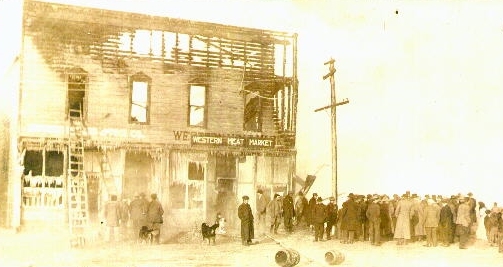
Western Meat Market, after fire of December 28, 1913, Superior, Wyo.
On December 28, 1913, a fire struck South Superior. In addition to the Meat Market, a hall; the Workingmen's Commercial, a
mercantile establishment; and two saloons burned.
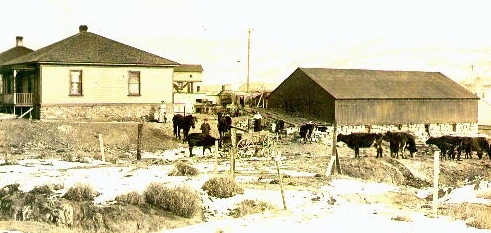
Superior, Wyo., Dairy, approx. 1913.
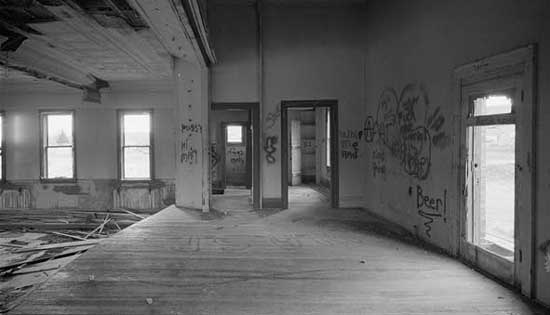
Second Floor Stage, Superior Miners' Temple.
Photo courtesy of Library of Congress, Prints and Photographs Division
With the Depression came a reduction of both freight and passenger trains on the UPRR and the
closure of many mines in Sweetwater County. Additionally, the mines in Superior began to
exhaust their reserves. As a result Superior declined from
a population of 1580 in 1920, to a population of only 241 in 1930. With the reduction in
employment, ultimately the unions were required to sell the Temple. And in the 1960's, as discussed below,
with the closure of the last mine in the area, the building was abandoned to the
elements. In 1923, the "A" mine closed. In 1937 the "E" mine closed and in 1939 the "B" mine closed.
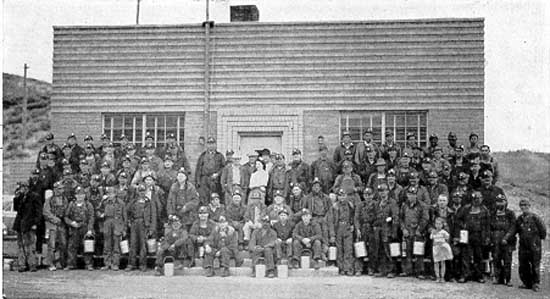
Miners from the "D" mine, 1943.
Photo courtesy of Anadarko Petroleum Corporation.
The miners in the photo were gathered as a result of winning a safety award. The following
year, 1944, the last of the original mines, the "D" mine closed.
In 1937, however, The Company began a program of modernization. In 1939, production started in the D. O. Clark mine with modern mechancial equipment.
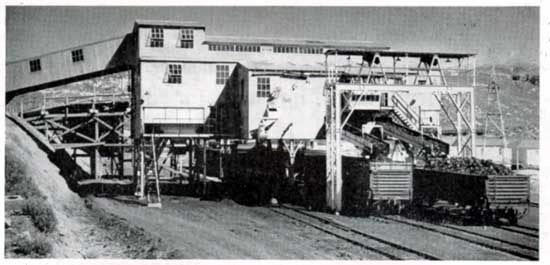
D. O. Clark Mine, Superior.
All Photos of the D. O. Clark mine courtesy of Anadarko Petroleum Corporation.
The D. O. Clark Mine had a steel tipple and a conveyor system rather than a hoist.
The mine was named after a former president of the Union Pacific Coal Company, Dyer O. Clark (1841-1921)
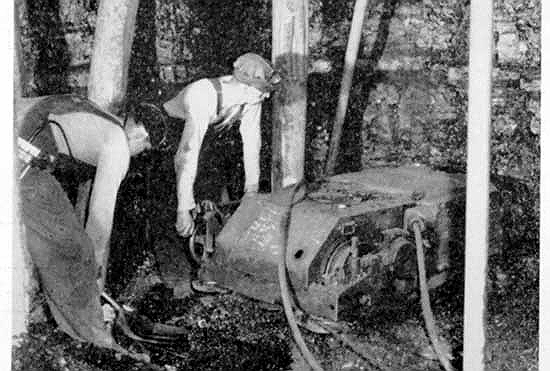
"Shortwall" mining machine, D. O. Clark Mine.
Shortwall mining utilizes a continuous mining machine and movable roof supports to cut coal
panels 150 to 200 feet wide. Coal is then hauled to the mine face by shuttle cars. Originally,
the older mines utilized mules to haul the trams. See next photo.
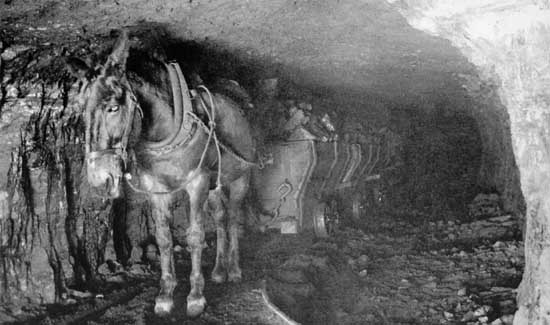
Mule-drawn tram in unidentified Union Pacific Coal Company mine.
Photo courtesy of Anadarko Petroleum Corporation.
Anadarko, whose photographs are displayed on this and and other pages of this
website, is a sucessor by merger of Union Pacific Resources. Thus, the Company continues to hold
large mineral reserves and lands in Wyoming, Colorado, and Utah and has a unique position in Wyoming with its
holdings dating back to the original grants to the Union Pacific Railroad in the 1860's. The Company is also involved with
Arco in the development of mineral interests in Alaska and elsewhere.
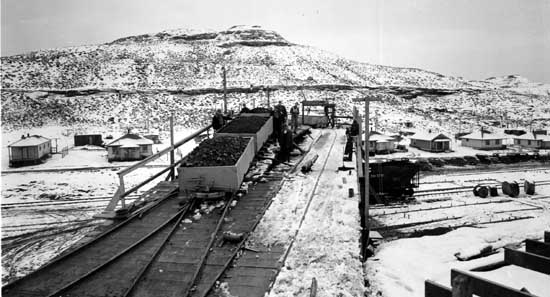
Trams, D. O. Clark Mine.
The D. O. Clark Mine closed in 1963.
Music this page:
My Sweetheart's The Mule in the Mine
(Traditional)
My sweetheart's the mule in the mine
Down below, where the sun never shine
And all day I just sit
And I chew and I spit
All over my sweetheart's behin'.
My sweetheart's the mule in the mine
I drive her without an-y line
On the bumper I sit,
And I chew and I spit
All over my sweetheart's behin'.
Next page: Coal Camps continued.
|